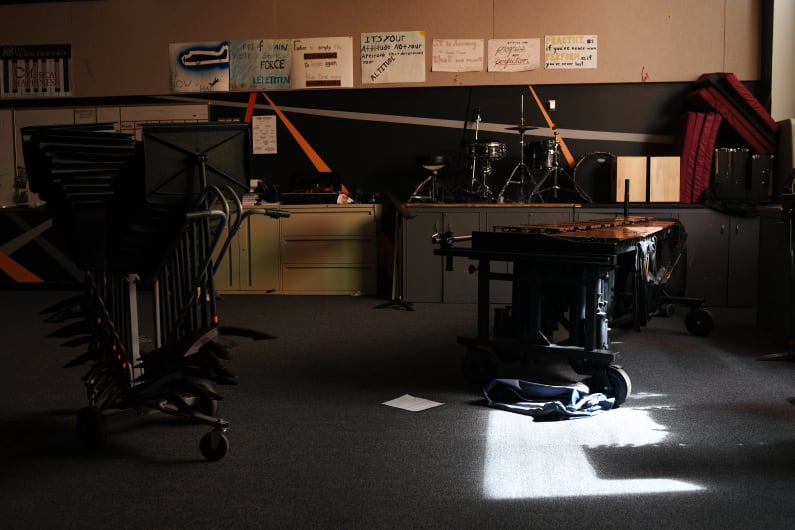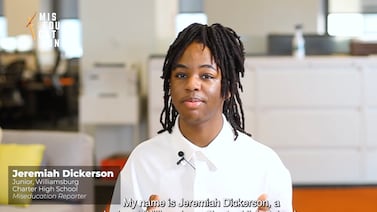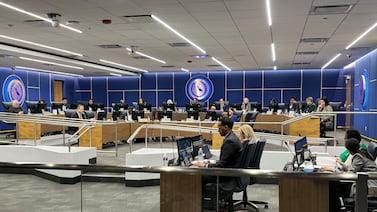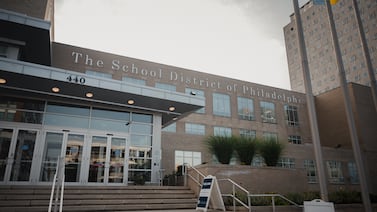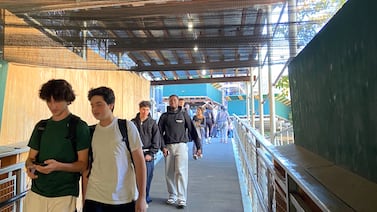Jeffco Public Schools is beginning work on up to $32 million of projects to prepare buildings to receive as many as 2,600 displaced students from 16 schools closing.
The more than a dozen projects planned include renovating buildings to accommodate preschoolers and students with disabilities or adding more space for the increase in students.
The price tag is equivalent to about 2 1/2 years of savings from closing the under-enrolled elementary schools at the end of the school year. Most of the work is expected to be completed this summer.
Last week, school board members expressed shock at hearing the $32 million price tag, and Thursday decided they might downsize some of the larger projects once they have more accurate enrollment projections for the next school year.
The district assured the school board that it expects to be able to cover the cost of those projects with $12 million the board had already agreed to set aside from bond money for such work, and with the savings of about $17 million in bond projects that will no longer happen at schools that are closing. The district also expects the projects to likely come in under the estimated $32 million, which includes conservative contingency costs.
District leaders told the board that the project costs are onetime expenditures, and that the district will still see ongoing savings from closing those 16 schools.
“The consolidation decisions that this board had the courage to make are ongoing and cumulative savings that we will be able to eventually, once we get things settled with the budget, apply to our kids’ extraordinary experiences,” superintendent Tracy Dorland told the board at last week’s board meeting.
The district expects to save $12 million in operating expenses every year after those 16 schools close.
“This decision pays for itself and then some,” chief financial officer Brenna Copeland said.
The school board Thursday night considered pausing some of the work due to the cost and uncertainty about the need, but decided that it didn’t want to risk not having enough space for students when school starts next fall.
Instead, it approved contracts to begin the first project: an addition at Prospect Valley, which is receiving new students from Kullerstrand, including a special needs program. The board plans to revisit the scope of the contract early next year, when it has enrollment numbers from the first round of choice applications.
Currently, Prospect Valley is slated to get an addition that includes eight new classrooms, including two classrooms designed for the affective needs program. The addition is expected to increase the building capacity to 650 students, but currently the district projects the school will enroll around 560 students next year.
If the projection is correct, the current building’s capacity might already be enough, though district leaders cautioned that letting a school reach near full capacity limits how effectively principals can manage class sizes, especially when the number of students isn’t distributed evenly per grade level.
Still, some board members weren’t convinced the school needs eight new classrooms.
“Why are we even going that high right now for 650?” said board member Danielle Varda.
Board members also questioned how the district might examine costs to renovate receiving schools when it considers recommendations to close secondary schools next year. At the secondary level, the district has almost finished the planned projects.
Copeland said that although the district has limited funds, officials already have some ideas where it might get the money for retrofitting secondary schools after possible closures. By then, the district might have started selling or leasing some of the empty elementary buildings, making some capital funds available. The district also could use leftover unallocated bond dollars.
District leaders say they don’t yet know what factors they might consider when deciding which secondary schools to close.
With elementary schools, the district closed schools that had fewer than 220 students or were using less than 45% of their building’s capacity, as long as there was another elementary school within 3.5 miles that could absorb the students. Costs of renovations weren’t calculated until after the 16 schools were identified.
The district doesn’t yet know what enrollment or capacity thresholds it would set to close secondary schools, or if it would use different factors. Leaders said it was too early to say if building renovation costs could play into the decision.
But Copeland said the district is not interested in making the decisions primarily about money. District leaders have said that the problem with small schools is that education suffers when teachers have to be responsible for students of multiple grade levels within one classroom, when teachers can’t collaborate with colleagues who teach the same grade level, and when schools can’t offer after-school programs and other enrichment.
“Very consistently, parents told us ‘My student is not a number; please don’t make these decisions based on that,’” Copeland said. “I very much don’t want the financial calculation to be a primary driver.”
Yesenia Robles is a reporter for Chalkbeat Colorado covering K-12 school districts and multilingual education. Contact Yesenia at yrobles@chalkbeat.org.

